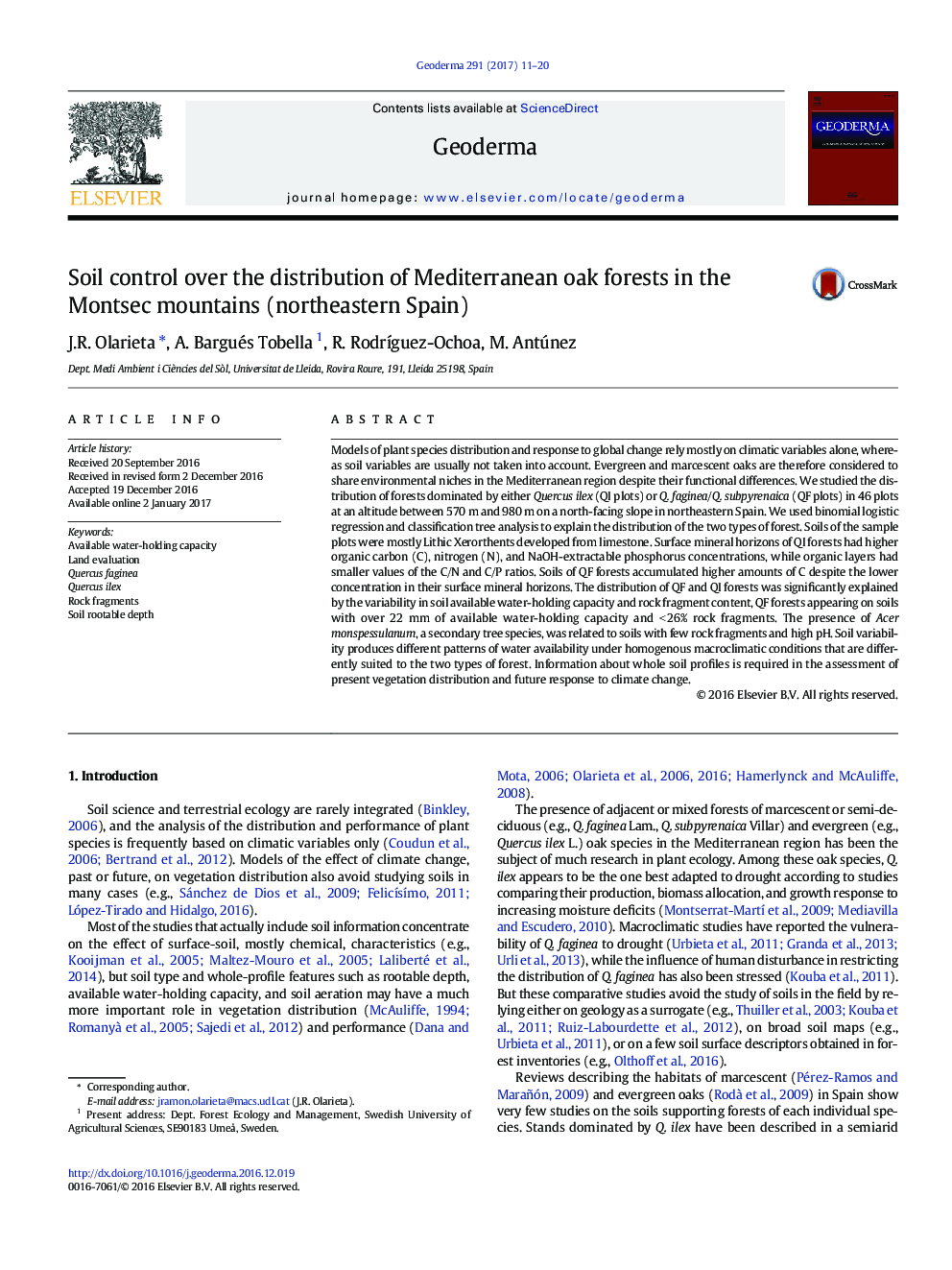| کد مقاله | کد نشریه | سال انتشار | مقاله انگلیسی | نسخه تمام متن |
|---|---|---|---|---|
| 5770410 | 1629426 | 2017 | 10 صفحه PDF | دانلود رایگان |
- Spatial patterns of soil-water availability control the distribution of oak forests.
- Soil available water-holding capacity and rock fragment content define these patterns.
- Holm oak dominates on stony soils with low available water-holding capacity.
- Marcescent oak dominates on deep soils with few rock fragments.
Models of plant species distribution and response to global change rely mostly on climatic variables alone, whereas soil variables are usually not taken into account. Evergreen and marcescent oaks are therefore considered to share environmental niches in the Mediterranean region despite their functional differences. We studied the distribution of forests dominated by either Quercus ilex (QI plots) or Q. faginea/Q. subpyrenaica (QF plots) in 46 plots at an altitude between 570Â m and 980Â m on a north-facing slope in northeastern Spain. We used binomial logistic regression and classification tree analysis to explain the distribution of the two types of forest. Soils of the sample plots were mostly Lithic Xerorthents developed from limestone. Surface mineral horizons of QI forests had higher organic carbon (C), nitrogen (N), and NaOH-extractable phosphorus concentrations, while organic layers had smaller values of the C/N and C/P ratios. Soils of QF forests accumulated higher amounts of C despite the lower concentration in their surface mineral horizons. The distribution of QF and QI forests was significantly explained by the variability in soil available water-holding capacity and rock fragment content, QF forests appearing on soils with over 22Â mm of available water-holding capacity and <Â 26% rock fragments. The presence of Acer monspessulanum, a secondary tree species, was related to soils with few rock fragments and high pH. Soil variability produces different patterns of water availability under homogenous macroclimatic conditions that are differently suited to the two types of forest. Information about whole soil profiles is required in the assessment of present vegetation distribution and future response to climate change.
Journal: Geoderma - Volume 291, 1 April 2017, Pages 11-20
